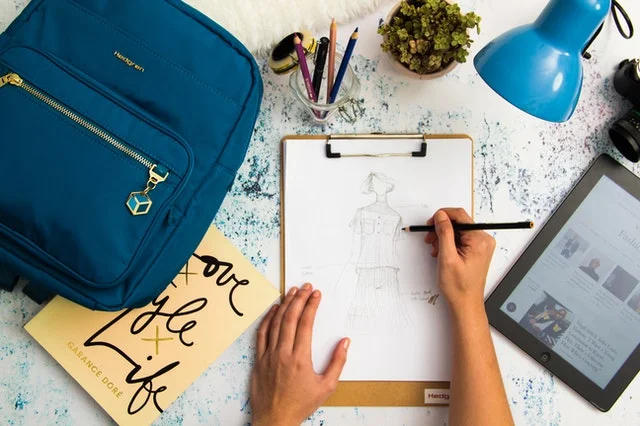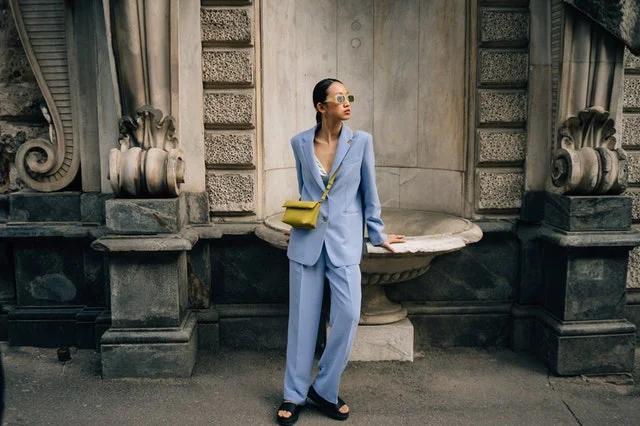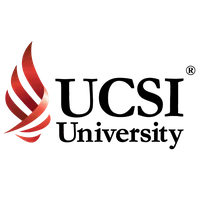
Fashion has truly snowballed into a massive global industry that earns billions in profit each year.
With designers all over the world competing to create the next big thing, the landscape of fashion designing is incredibly steep.
Many start off with big dreams and ambitions, but lack persistence to keep at their craft.
However, if you think you have all it takes, go ahead and step foot into the world of fashion.
As long as you are persistent, nothing is impossible!
Defining fashion design
Fashion design is the study which incorporates principles of arts with design and manufacturing. A typical fashion designer will design either garments or elements of a garment.
Some fashion designers choose between designing for high couture or daily wear but the procedure remains the same for both of these categories.
What are the essential skills needed?
1. Good drawing skills
Imagine having the greatest design known to man envisioned in your mind but with no way of putting it to paper? This is why drawing is necessary as you would need to be able to translate your visions and inspiration onto paper.
2. Research, research and more research!
Coming up with the next big thing is not as much of a eureka moment as it is studying past fads and monitoring current fashion trends. This is where your research skills will come in handy.
3. Team player
A fashion designer hardly works alone (unless you’re a small indie seamstress). Being able to work in a team will be crucial especially when coming up with elaborate and intricate designs.
4. Business-oriented
Being creative and coming up with the best designs would be meaningless if you lack skills to market and get your designs out there. Let’s face it, passion can only fuel your business for so long.
5. Competitive spirit
This skill is required to make sure you don’t lag behind your competitors or follow their lead. Being competitive would encourage you as a designer to take that leap of faith when producing new designs.
6. Technical skill
This is one of the more basic things that are overlooked. The fundamental skills a designer would need is the ability to sew and having a good eye for colour.
Why should you pursue a career in fashion design?

Most designers agree that the the idea of self-expression and creativity is one of the biggest motivating factors that drove them into the field. Seeing your vision come to life and manifest into a garment is something beyond satisfactory.
Another reason would be the thrill and excitement of fashion. We’ve seen ourselves how fast trends change and how quickly the next trend comes to replace the other.
This environment is perfect for those who live life on the fast track. Fashion demands constant change and upgrading. What motivates you as a designer is coming up with viral and trendy pieces of clothing.
Besides that, fashion can also be very lucrative. Big time designers (think Ralph Lauren and Michael Kors) live a lavish life all funded by their career as designers. Of course this is not the case for every designer.
However, fashion is still sustainable. Working hard and doing your best to move up the ladder would ultimately determine your success, much like in any career.
Expected salary
Your salary will typically vary according to your skill, line of work and experience. As a fashion designer you will be able to earn anywhere between RM 3,000 and RM 5,000 a month!
Job opportunities
Fashion Designer
- A fashion designer can be categorized as an accessory or a clothing designer. A fashion designer will come up with pieces of garments to be worn. Some elements that a fashion designer can focus their line of work in is daily wear, high fashion and other relevant themes.
Pattern Maker
-
A pattern maker's job is ultimately to create patterns on fabrics and apparel. Though this role may seem insignificant, it plays a huge job on taking a design to the next level. Even if the structure and shape of a garment is good, the patterns will either make or break the piece!
Visual Merchandiser
- Also known as a display manager, a visual merchandiser is in charge of the display, layout and decorations of the overall store. Humans are visually driven beings, thus a visual merchandiser's role is central in beautifying the display spaces to attract more customers.
 +60142521561
+60142521561
















